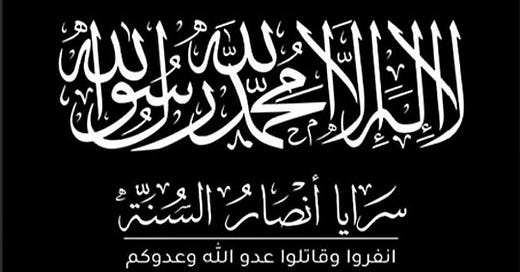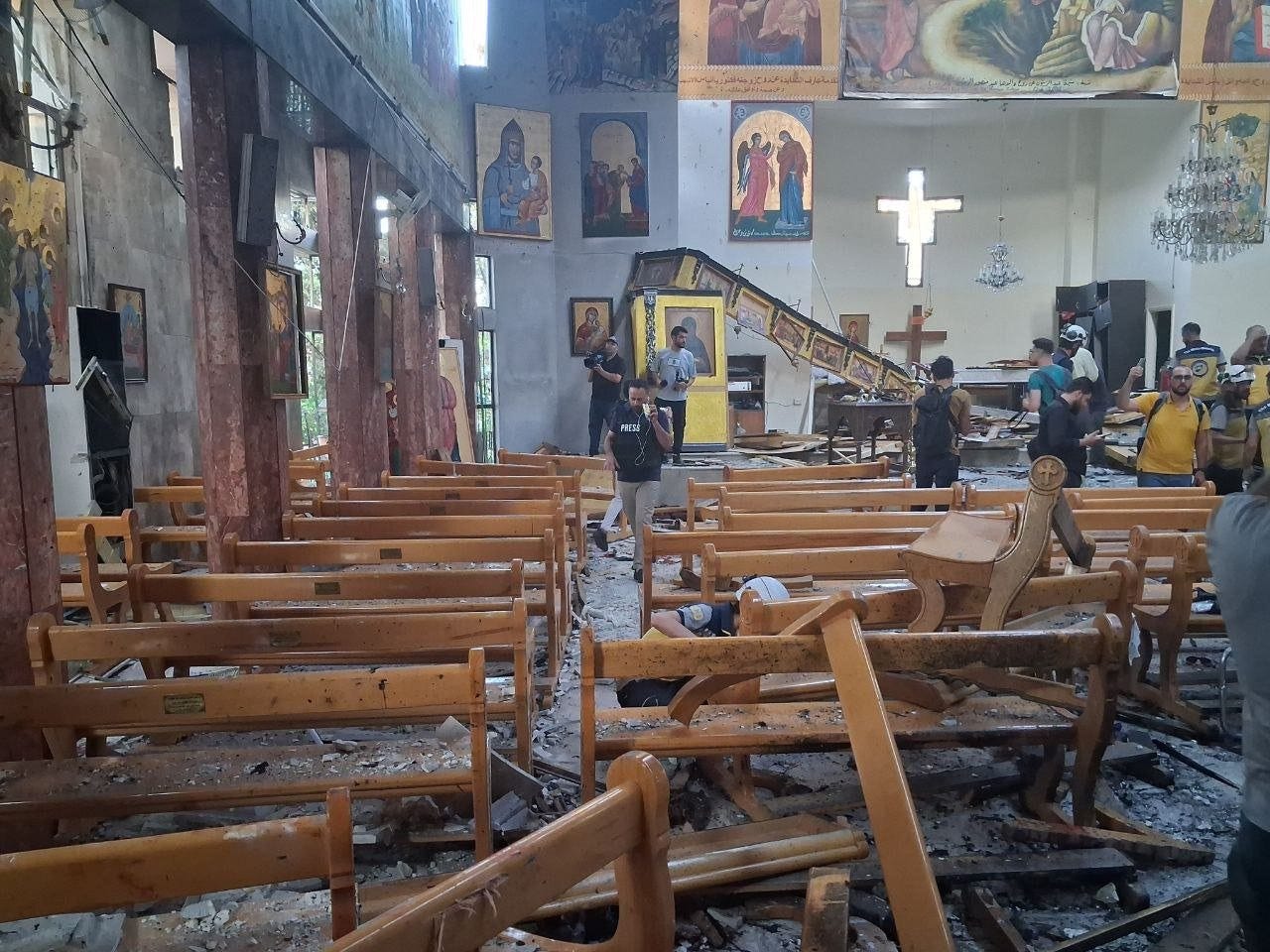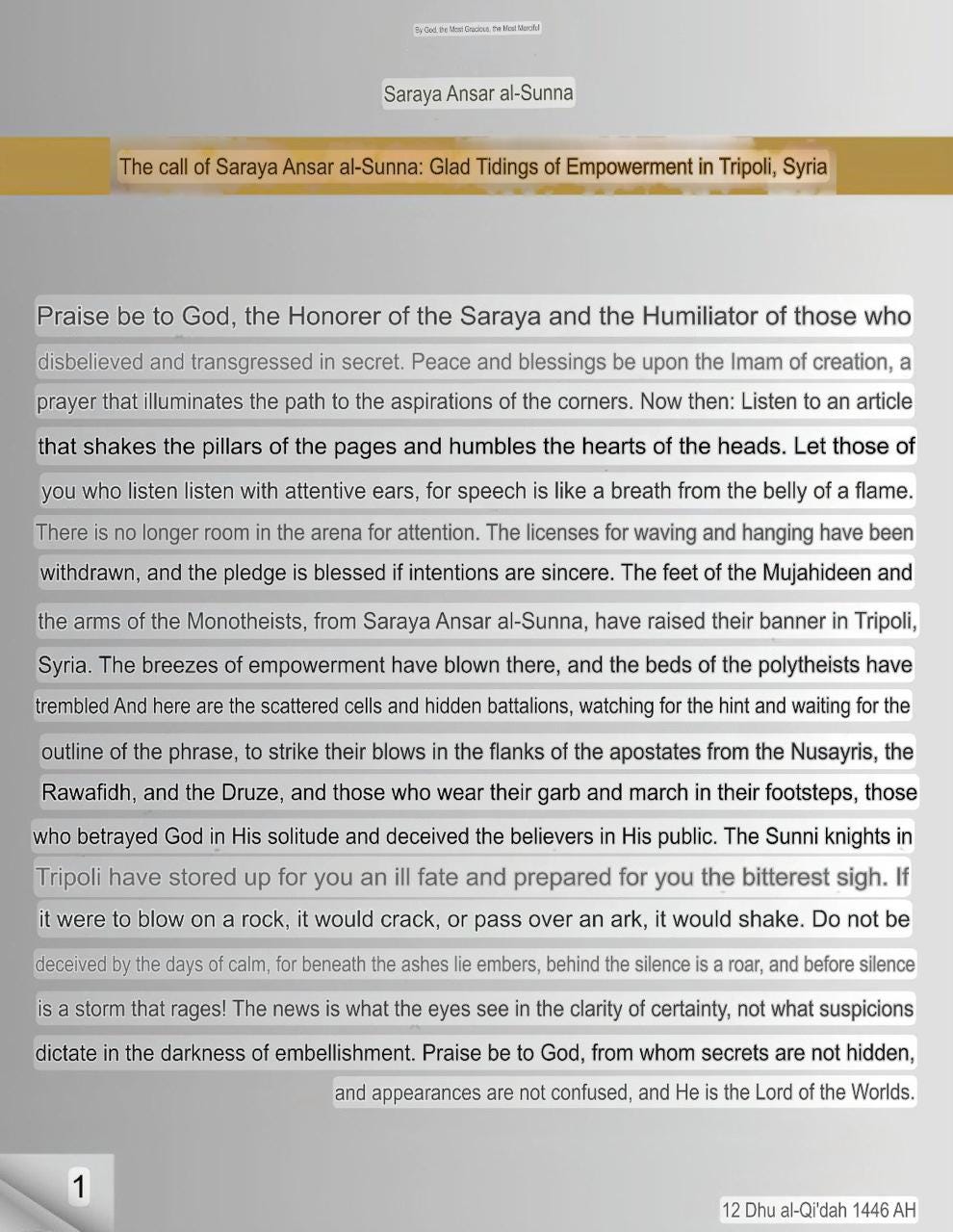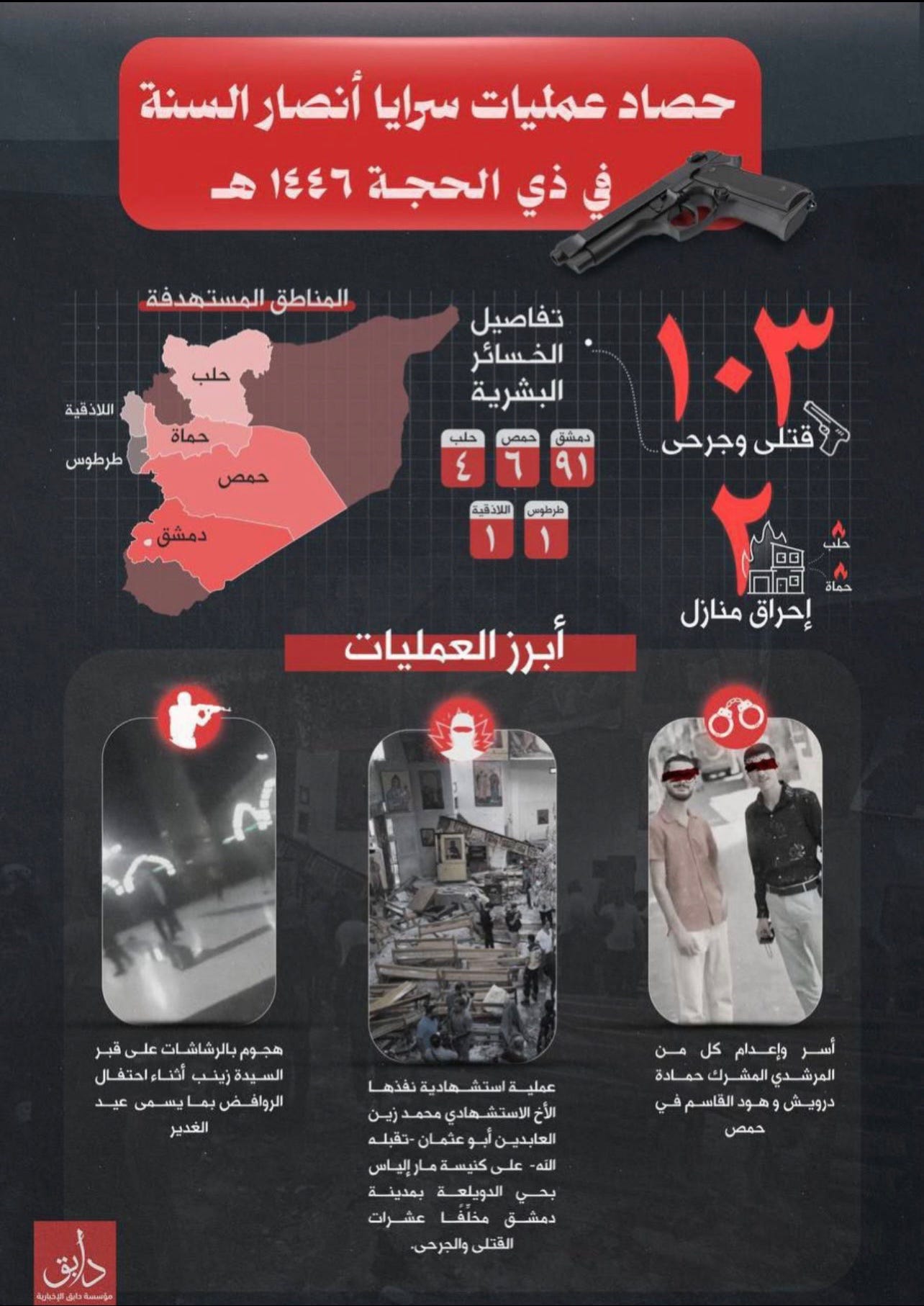What is the Saraya Ansar al-Sunna group?
New group in the new Syria, and a possible future challenge
The Islamic State was held responsible for the June 22nd St. Elias Church attack in Damascus. However, the group has not claimed responsibility for the attack. Two days later, a group named Saraya Ansar al-Sunna claimed responsibility for it.
St. Elias Church in Damascus after the attack. Source: Lord of War
Saraya Ansar al-Sunna (Supporters of the Prophetic Tradition Squadrons) is a salafi-jihadist group that emerged after the fall of Bashar al-Assad’s regime. It is an independent group. It has been said that it is a former HTS splinter that radicalized after Ahmed al-Sharaa came to power. Some researchers consider that this splinter could be pro IS . Some also think that it is a front group for the Islamic State. The group has denied any links to ISIS, at the same time that the latter has told its followers to avoid SAS. However, they don’t rule out working together. They consider the Islamic State to be “people of truth”, and it is obligatory to support them and join their ranks. They employ their doctrine, methodology, and religious training materials. It seems it’s a decentralized network of lone wolf actors, rather than a formal terror network. It has been claimed that some members of the Syrian Ministry of Defense and General Security are covertly affiliated with the group. Others consider it a covert arm of the current Syrian government to conduct black operations, or a tool of the former Assad regime designed to inflame sectarian tensions and discredit the current leadership. They have been compared to the former government Shabiha militias, which were accused of doing the dirty job. Also, some consider the possibility of it being a fabrication of unknown actors to inflame sectarian tensions.
Flag of Saraya Ansar al-Sunnah
It aims to fight the remnants of the Assad regime, Shias, Alawites, Christians, Druze, and the Syrian Democratic Forces.
The group is led by Abu Aisha al-Shami, and its Sharia official Abu Fatah al-Shami. This group has approximately one thousand fighters. Existing branches have been confirmed on Aleppo, Latakia, and Tripoli (Lebanon). Abu Aisha was the head of the old HTS recruiting office.
Saraya Ansar al-Sunna announces its entry into Tripoli, Lebanon. Source: Bellum Acta - Intel, Urgent News and Archives
Despite its claims of fighting the former regime, Alawites, Shiites and Christians, they have struggled to gain recognition in the jihadist community.
Their headquarters are unknown.
The group’s history could be traced even before the defeat of the Assad government. Saraya Ansar al-Sunna was an alleged part of Haya’at Tahrir al-Sham, helping the former to recruit cells to operate inside the Assad held territory. Saraya Ansar al-Sunna radicalized as HTS government consolidated. It disagreed with some of its policies, like releasing prisoners of the former regime captured during the December 2024 offensive. It also accused the new government of failing to apply Shariah Law. Another grievance is the government’s leniency towards Shiites and Alawites. The group has declared “takfir” or excommunication on the current Syrian government, because of its lack of accountability on perpetrators of abuses against Syrians. They consider Ahmed al-Sharaa a “taghut”, or tyrant, as well as accused him of being an “American agent”.
In late January 2025, Saraya Ansar al-Sunna began to assert itself as a new entity. It is claimed that they also absorbed members of the former al-Qaeda branch in Syria, Hurras al-Deen. Other members are civilians pledging allegiance after the groups formation.
Graphic showing the attacks by Saraya Ansar al-Sunna.
It has been focused on attacking members of the fallen regime members and minorities. Sectarian revenge attacks are an important part of its operations. Its current messages frequently refer to Christians, Alawites and Druze as “polytheists” and “infidels”.
They have been involved in a series of attacks after Assad fell.
The first one was a massacre of ten Alawites in Arza, Hama.
They were behind the attack on an Alawite mayor in Homs.
The group has claimed responsibility for massacres of Alawites in Qarfis, Latakia, near a shrine.
SAS has also attacked Alawites in Jableh and Latakia.
They were involved in the March 2025 coastal massacres in Latakia.
At the end of Ramadan, they claimed the executions of thirteen people. It was a “Harvest of Ramadan” campaign. This also included the desecration of shrines in Qardaha
They also attacked with a grenade the home of the Druze spiritual leader, Sheikh Hekmat al-Hijri.
They have claimed attacks in Iraq.
On June 20th, they stated they would cease media activities. However, they would continue their attacks.
On June 22nd, 2025, the group carried out an attack at St. Elias Greek Orthodox Church in Damascus. It named the man responsible for it as Muhammad Zaid al-Abidin, aka Abu Uthman. It described the attack as a response to the government’s prohibition on unapproved proselytization and to “provocations” by Christians. It killed twenty-five people.
Assessment
It is too early to determine more details about Saraya Ansar al-Sunnah’s nature. We know it is a salafi-jihadi group. It is also known that its leader was a former member of Haya’at Tahrir al-Sham. Its links to the Islamic State are still unclear. However, it is worth to observe it in the future. First, because they are a new extremist group, regardless of the theory of origins. Second, because of the possibility of it being a front group for ISIS. If that’s the case, the group could gain momentum again if failed to be contained. Third, because of its attacks on minorities, threatening them even more on the new Syria. And fourth, they could capitalize on the alleged failures of the new Syrian government to implement Islamic Law and thus recruit from the most extremist sectors in the HTS government.
Conclusions
Saraya Ansar al-Sunna entered in the scenario after the fall of the Assad regime, and has focused on the religious minorities and members of the former government. It is against the new Syrian government because of its failures to implement strict Sharia Law and its “mercy” towards minorities and former government workers. Many things are still to be known about the group. However, it needs to be observed, because it may cause more problems in the new Syria.
Guillermo is a journalist, writer and independent international analyst. If you like what you read, please support him by donating:
ACCOUNT: 26-02292515-1
CLABE: 014320 260229 251515
Santander México
https://www.paypal.com/donate/?hosted_button_id=FWD9U4PJL7ZPQ
This money will help to do more research, improve this website, and get more material. Thank you!







